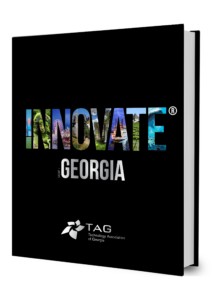CoreSite probably is a part of your life today. As a colocation data center provider, CoreSite and its partners deliver services that shape how we live, work and play, creating the “intersection of interconnection” that helps empower modern digital life.
CoreSite started in 2001 as CRG West, a portfolio company of The Carlyle Group. A combination of real estate investment and technology innovation, CRG West was created to meet the needs of interconnection and data center customers at One Wilshire® in Los Angeles and 55 South Market in San Jose, California. At that time, most people accessed the nascent internet via dial-up, e-commerce and online shopping were just getting started and social media was virtually non-existent.
A sea change was brewing, however. In 2009, CRG West rebranded as CoreSite – a name indicative of the company’s capabilities and mission-critical reliability. CoreSite had 11 data centers in seven markets, broadband and mobile connectivity was on the rise, the cloud was gaining traction and Facebook had 350 million users.

CoreSite’s Dual Role: Innovator and Innovation Enabler
CoreSite is both an innovator and innovation enabler. Data centers have been evolving in design, capabilities and importance since they were “carrier hotels” while also staying true to their fundamental purpose – housing and powering IT infrastructure equipment and being a nexus for networks.
CoreSite data centers are purpose-built for use cases ranging from enterprise business processes and telecommunications to content delivery and artificial intelligence (AI). Thanks to architecture and design knowhow, CoreSite can customize deployments that include high-density servers, incredibly reliable power and cooling systems (including liquid cooling) and low-latency interconnection to digital ecosystems and clouds.
The history of the cloud includes CoreSite innovation, specifically the birth of native cloud onramps and the Open Cloud Exchange® (OCX). When AWS launched in 2003, the rush to the cloud was on. AWS found, however, that managing thousands of connections to their new service was very challenging.
AWS approached CoreSite because the company’s data centers were proven to be reliable, located in key metro markets and “network-dense:” their target customers already were connecting through CoreSite. AWS trusted CoreSite to allow CoreSite’s customers to directly (natively) connect to AWS servers in CoreSite data centers. The question became, “How can direct connections be established and orchestrated?” OCX was the answer.
The OCX drastically simplifies and speeds managing this extremely complex networking task. Today, CoreSite offers native cloud onramps to all major cloud service providers, a differentiator that enables customers to do business, maximize the value of their multicloud strategy and grow.
CoreSite has the privilege of providing expertise and colocation services to ingenious, innovative clients that include household names, enterprises of all sizes in all industries, and start-ups determined to be the next big thing. They count on CoreSite to provide a platform for innovation. Whether that means moving their on-premises data center into CoreSite facilities, securely sharing data with business partners, being cloud-smart or accelerating IT modernization, they can take advantage of 20 years of data center industry “training” that allows supporting them on a platform built to meet their changing needs.
Atlanta’s Future is Also CoreSite’s Future
With the third-largest concentration of Fortune 500 companies in the U.S., Atlanta is a vital place for businesses to locate their IT infrastructure – and that is one of the reasons why CoreSite is there. Atlanta represents a “metro edge,” a city with a large population and extensive digital ecosystem. Data centers in metro edge regions are important because they will be the hub for moving and processing data generated at the edge. CoreSite’s mission is “Empowering a More Connected Future.” That includes wired and wireless network convergence. As an American Tower company, CoreSite is uniquely positioned to build highly distributed data center capacity and, ultimately, a truly unified data transport fabric. How this comes to pass and even if it does are unknown, but isn’t that one point of innovation? It’s an exciting time in the data center industry, with a future brightly lit by disruptive innovation like generative AI and ongoing perfection of technologies that shape our lives, every day.














